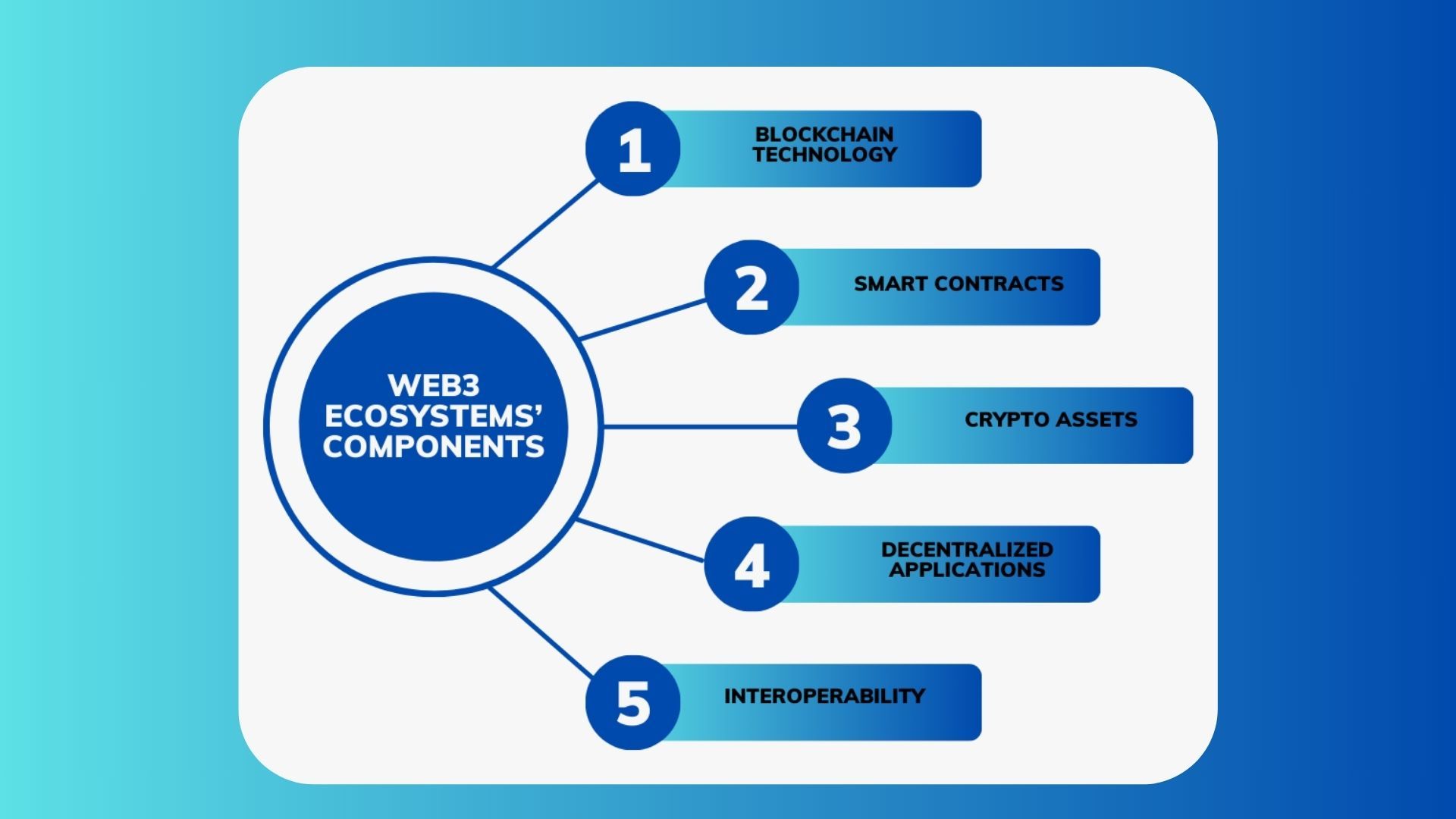
Understanding the Web3 Ecosystem: A Primer for the Curious
Table of Contents
What is the Web3 Ecosystem?
It's an enhanced, updated version of the internet that opens up an infinite number of new possibilities. Because it is based on blockchain technology, the Web3 environment operates in a decentralized manner, empowering users with increased autonomy, and control, free from the constraints of a central authority.
The Web3 Ecosystems' Significance
- Decentralization is the cornerstone of Web3, which leverages several technologies to encourage innovation. Web3, which combines a wide range of technologies, has been portrayed by experts as the next development of the internet. To gain a deeper understanding of how Web3 is characterized, consider reviewing "How Does Web3 Work".
- Web3 also incorporates artificial intelligence and natural language processing to construct a user-friendly online environment. Its focus lies in identifying the purpose and context underlying online user interactions, and then aiming to deliver customized user experiences. Its goal is to create a networked web that guarantees accessibility and data exchange across various platforms and applications.
What are the essential components that constitute the Web3 Ecosystem?

- Blockchain Technology: Operating similarly to a digitally distributed and decentralized record book, a blockchain serves as a ledger. A new block is made and permanently linked to the chain each and every time fresh data is contributed to the network. After that, the modification is reflected on all blockchain nodes.
- Blockchain Technology: Each time new data is added to the network, a new block is created and permanently linked to the chain. Subsequently, the modification is mirrored across all blockchain nodes.
- Smart contracts: These are particular software programs that operate on the blockchain. "If-then" logic is the foundation of the main program.
- Crypto Assets: In the Web3 era, fungible and non-fungible tokens (NFTs) emerged as a digital asset. These can be cryptocurrencies, stable coins, central bank digital currencies (CBDCs), and the aforementioned NFTs (nonfungible tokens). This is seen to be an innovative approach for transactions between individuals and corporations.
- Decentralized Applications: Web3 offers a unique blend of decentralization and interactive experiences that are utilized to create a new internet paradigm that eliminates the need for intermediaries. Centralized apps, or dApps, are used to trade cryptocurrency, purchase and sell NFTs, and provide access to DeFi solutions.
- Interoperability: Users may interact and utilize their digital assets across many platforms by means of interoperability. Web3 is more secure than Web2, even if consumers might have total control over their data since Web3 is consolidated under corporate management.
How may a Web3 environment be constructed?
Building a Web3 ecosystem requires a certain understanding of the relevant subject. Thus, comprehensive teaching is required and might be quite beneficial.
1. Create a developer experience that is attractive
Creating a developer experience that is appealing is essential to advancing Web 3. Additionally, as you develop an advantageous interaction, allow them to gain trust in your environment. When creating an ecosystem, a few things need to be taken into account. Answering queries from developers and being aware of the duties may make designing fairly approachable.
The team's experience as developers helps in the discovery of documentation and sample code, and they also offer code reviews to collaborators engaged in significant blockchain initiatives inside the Web3 ecosystem. Such as Telegram and Discord.
2.Develop the Ecosystem of Infrastructure
Due to its open-source tools, Ethereum will be the top choice for developing a Web3 application. Truffle and Hardhat, for example. which is effective for creating, compiling, testing, and deploying blockchain applications more quickly. The backend features needed for decentralized applications (dApps) are the main focus of the blockchain architecture. Notable backend features include wallets, Web3 APIs, smart contract programming languages, node providers, and development frameworks.
3.Mapping the Application Ecosystem
Immediately following the ecosystem's infrastructure is developed, it has to be mapped to the application. Comprehending the functioning of web3 will enhance your comprehension of the significance of evaluating the teams operating within the ecosystem at now. It is crucial to search for any areas that require development.
An efficient ecosystem needs to know more about the components that are lacking and come up with fresh ideas to improve them. However, the ecosystem needs to assist the developers in making their concepts a reality. By incorporating several web3 application types in your decentralized ecosystem, you may create a decentralized web3 ecosystem.
Examples:
- Decentralized Finance
- NFTs
- Metaverse
- Play-to-earn-games
- Governance
- Identity and Authentication
- Prediction Markets
- Enterprise Use Cases
- Social Media.
4.Specify the Growth Strategy
As you develop your web3 environment, the following stage is all about growth. You now understand what your web3 ecosystem needs to have and what is needed to construct it.
Since communication teams could not follow the in-house strategy to create every aspect, the rise of third-party developers is closely correlated with the emergence of a web3 ecosystem. For example, in order to establish crypto-native infrastructure—which was necessary for creating large-scale applications—Terraform Labs concentrated on smaller development teams. Additionally, the web3 platform engaged developers by organizing hackathons and other hacker events.
5.Clearly define your company's corporate strategy.
After you've established an ecosystem, you should focus on formulating a long-term plan to ensure the survival of your Web3 ecosystem. Value propositions need to be prioritized first, followed by developers. Businesses like Blockchain and Web3 are benefiting from increasing their market share. Various businesses are developing innovative ideas to carry out their company strategies.
Bottom Line
Establishing an ecosystem is a lot like launching a project from scratch. The Web3 ecosystem consists of several layers, yet each layer offers a solution. You may explore some of the well-known ecosystems, such the Solana and DeFi ecosystems, to learn more about ecosystems.






